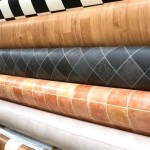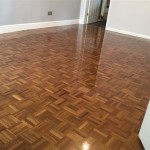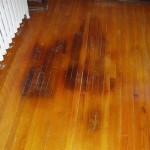Vinyl Flooring Planks: A Guide For Homeowners Associations
Homeowners Associations (HOAs) are often tasked with maintaining property values, ensuring aesthetic consistency, and establishing guidelines for improvements within a community. One common area of concern for both HOAs and individual homeowners is flooring, particularly when homeowners are considering renovations or replacements. Vinyl flooring planks (VFP) have emerged as a popular choice due to their affordability, durability, and aesthetic versatility. However, their installation can fall under HOA regulations, requiring a comprehensive understanding of the product and its implications for the community.
This guide aims to provide HOAs with the necessary information to make informed decisions regarding VFP. It will cover various aspects of VFP, including its types, benefits, installation considerations, and potential impact on community standards, thereby enabling HOAs to develop effective guidelines and regulations concerning their use.
Understanding Vinyl Flooring Planks
Vinyl flooring planks, sometimes referred to as luxury vinyl planks (LVP), are a synthetic flooring material designed to mimic the appearance of hardwood or stone. They are constructed from multiple layers, typically including a wear layer, a print layer, a core layer, and a backing layer. The wear layer is the top surface that protects the plank from scratches, dents, and stains. Its thickness dictates the floor's durability and suitability for high-traffic areas. The print layer provides the visual design, allowing for a wide array of styles and patterns. The core layer provides structural stability and may be composed of different materials, affecting the plank's rigidity and water resistance. The backing layer provides cushioning and helps with noise reduction.
There are two primary types of VFP: flexible and rigid core. Flexible vinyl planks are more pliable and are often glued down to the subfloor. Rigid core vinyl planks, on the other hand, have a more rigid construction and are typically installed using a click-lock system, allowing them to float above the subfloor. Within the rigid core category, there are further sub-categories like Stone Polymer Composite (SPC) and Wood Polymer Composite (WPC), each offering different performance characteristics related to water resistance, density, and sound absorption.
Selecting the appropriate type of VFP is crucial for achieving desired performance and aesthetic goals. Factors such as the amount of foot traffic, potential for moisture exposure, and desired level of sound insulation should all be considered when making this selection. HOAs should consider how the choice of material impacts common areas or affects the sound transmission between units.
Furthermore, understanding the varying qualities within each type is essential. Lower-quality VFP may exhibit issues like warping, fading, and susceptibility to scratches. Higher-quality VFP, while more expensive, offers increased durability, better aesthetic appeal, and a longer lifespan. Specifying minimum quality standards can prevent issues that would diminish the overall visual quality on the property.
Benefits and Considerations for HOAs
The appeal of VFP for homeowners stems from its various advantages. It is generally more affordable than hardwood or stone flooring, making it an attractive option for budget-conscious homeowners. Its durability makes it suitable for high-traffic areas and households with pets or children. Many VFP products are also water-resistant or waterproof, making them a practical choice for kitchens, bathrooms, and basements. Installation is relatively straightforward, especially with click-lock systems, which reduces labor costs. The wide range of available styles and patterns allows homeowners to achieve a desired aesthetic without the maintenance requirements associated with natural materials.
For HOAs, the widespread adoption of VFP can present both opportunities and challenges. The consistent and appealing aesthetic of VFP can enhance the overall appearance of the community, particularly if guidelines are in place to ensure uniformity in color and style within certain areas. The durability and water resistance of VFP can reduce the likelihood of damage and associated repair costs, potentially lowering overall maintenance expenses for the HOA. VFP that complies with specific sound transmission standards can minimize noise complaints between units, contributing to a more harmonious living environment.
However, certain considerations must be addressed to avoid potential issues. Substandard VFP can detract from the overall aesthetic of the community and may require frequent replacement, leading to increased costs and disruptions. Improper installation can lead to issues such as uneven surfaces, gaps between planks, and moisture damage, creating maintenance headaches for both homeowners and the HOA. Variations in VFP thickness and underlayment can create height differences between rooms or units, potentially posing tripping hazards or affecting door clearances. Failure to address sound transmission concerns can lead to noise complaints and conflicts between residents.
These considerations highlight the importance of establishing clear guidelines for VFP installation within the community. These guidelines should address issues such as acceptable VFP types, minimum quality standards, installation procedures, and sound transmission requirements. They should also outline the process for obtaining HOA approval for VFP projects to ensure compliance with community standards.
Developing Effective HOA Guidelines for VFP
The development of effective HOA guidelines for VFP requires a balanced approach that respects homeowners' rights while preserving the overall aesthetic and structural integrity of the community. The guidelines should be clear, concise, and easily accessible to all residents. They should also be regularly reviewed and updated to reflect changes in technology and industry best practices.
First, the guidelines should address acceptable VFP types. These types should be specifically defined, and their suitability for different areas of the property should be outlined. For example, the guidelines may specify that only rigid core VFP is permitted in areas prone to moisture exposure, such as bathrooms and kitchens. Color and pattern guidelines should be created to ensure that a unified aesthetic is maintained through the property.
Specifying Minimum Quality Standards
Minimum quality standards should be established for all VFP products used within the community. These standards should address issues such as wear layer thickness, core material density, and water resistance. Specifying a minimum wear layer thickness is essential for ensuring durability and preventing premature wear. For example, the guidelines may require a wear layer thickness of at least 20 mils for residential applications and 28 mils for commercial or high-traffic areas. The core material should be specified to ensure adequate structural stability and water resistance. For instance, the guidelines may require SPC cores for areas prone to moisture exposure and WPC cores for areas where sound absorption is a priority.
The guidelines should also specify testing and certification requirements. VFP products should be required to meet industry standards for volatile organic compound (VOC) emissions, slip resistance, and fire safety. Acceptable certifications may include FloorScore, Greenguard, and ASTM standards. Requiring homeowners to provide documentation demonstrating compliance with these standards can help ensure that only high-quality, safe VFP products are used within the community. The HOA can provide a list of recommended, pre-approved brands to further streamline the process.
Installation Procedures and Sound Transmission Requirements
The guidelines should provide detailed instructions for VFP installation to ensure consistency and prevent potential problems. These instructions should cover topics such as subfloor preparation, underlayment requirements, plank alignment, and edge sealing. Proper subfloor preparation is crucial for ensuring a level and stable surface for the VFP. The guidelines may require homeowners to repair any cracks or unevenness in the subfloor before installing the VFP. Underlayment requirements should be specified to address issues such as moisture resistance, sound insulation, and comfort. The guidelines may require the use of a specific type of underlayment with a minimum thickness and density. All contractors working in the community should be licensed and insured to protect residents and the association from liability.
Sound transmission between units is a significant concern for many HOAs. The guidelines should address this issue by specifying minimum sound transmission class (STC) and impact insulation class (IIC) ratings for VFP installations. STC measures the airborne sound transmission, while IIC measures the impact sound transmission. The guidelines may require homeowners to use VFP products with STC and IIC ratings that meet or exceed local building codes. The integration of sound-dampening underlayments can further mitigate sound transmission between units. Proof of testing through accredited laboratories may also be required to ensure that proper sound transmission is being met.
HOA Approval and Enforcement
The guidelines should clearly outline the process for obtaining HOA approval for VFP projects. This process should include submitting detailed plans and specifications for the proposed VFP installation, including information on the VFP type, quality standards, installation procedures, and sound transmission ratings. The HOA should have the right to inspect the installation to ensure compliance with the guidelines. A standardized inspection checklist can streamline the process and ensure that all necessary components of the installation have been inspected.
Enforcement mechanisms should be established to address violations of the VFP guidelines. These mechanisms may include warnings, fines, and the requirement to remove or replace non-compliant VFP installations. Consistent and fair enforcement of the guidelines is essential for ensuring compliance and maintaining the overall aesthetic and structural integrity of the community. A clear and transparent process for addressing violations should be established, and all homeowners should be treated equally.
By following these guidelines, HOAs can effectively manage the use of VFP within their communities, ensuring that it contributes to the overall value and aesthetic appeal of the property while minimizing potential problems and conflicts.
Understanding Hoa Flooring Rules

What Is Luxury Vinyl Plank The 2025 Homeowner S Guide Floors For Paws

Vinyl Flooring Everything You Need To Know Before Floors

Toxin Free Luxury Vinyl Plank Flooring Healthy House On The Block

Best Luxury Vinyl Flooring A Comprehensive Guide For Homeowners Today S Homeowner

Toxin Free Luxury Vinyl Plank Flooring Healthy House On The Block

Luxury Vinyl Flooring Installation Tips Facts 101 In Simi Valley Ca

Home Flooring Guide How To Choose Hardwood Carpet More

Nwfa Installation Guidelines Carlisle Wide Plank Floors

Toxin Free Luxury Vinyl Plank Flooring Healthy House On The Block
Related Posts








